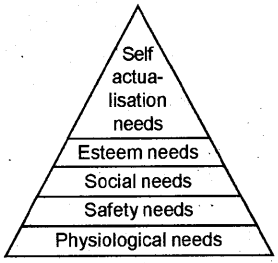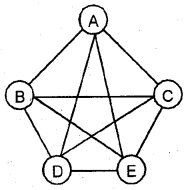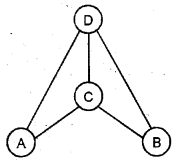Kerala Plus Two Business Studies Notes Chapter 7 Directing
Meaning
Directing refers to the process of instructing, guiding, counseling, motivating and leading people in the organisation to achieve its objectives.
Features
- Directing initiate action
- Directing takes place at every level of management
- Directing is a continuous process
- Directing flows from top to bottom
Importance of Directing
- Directing helps to initiate action by people in the organisation towards attainment of desired objectives.
- Directing integrates employees efforts in the organisation in such a way that every individual effort contributes to the organizational performance.
- Directing guides employees to fully realise their potential and capabilities by motivating and providing effective leadership.
- Directing facilitates introduction of needed changes in the organization.
- Effective directing helps to bring stability and balance in the organization.
Principles of Directing
- Maximum Individual Contribution: This principle emphasises that directing techniques must help every individual in the organization to contribute to his maximum potential for achievement of organisational objectives.
- Harmony of Objectives: The objectives of individual and organization must be in harmony with each other.
- Unity of Command: This principle insists that a person in the organisation should receive instructions from one superior only.
- Appropriateness of Direction Technique: According to this principle, appropriate motivational and leadership techniques should be used while directing the people.
- Managerial Communication: Effective managerial communication across all the levels in the organisation makes direction effective.
- Use of informal organization: Managers must make use of informal structure in the formal organisation forgetting correct and real feedback.
- Leadership: While directing the subordinates, managers should exercise good leadership.
- Follow through: Managers must continuously review whether the instructions are being understood and followed by the employees or not.
Elements of Direction
- Supervision
- Motivation
- Leadership
- Communication

Supervision
Supervision means overseeing the subordinates at work. Supervision is instructing, guiding and controlling the workforce with a view to see that they are working according to plans, policies, programmes and instructions.
Importance of Supervision:
- A good supervisor acts as a guide, friend and philosopher to the workers.,
- Supervisor acts as a link between workers and management. It helps to avoid misunderstandings and conflicts among the management and workers.
- Supervisor provides good On the Job training to the workers and employees.
- A supervisor with good leadership qualities can build up high morale among workers.
- A good supervisor analyses the work performed and gives feedback to the workers.
- Supervisors help to maintains harmony among workers.
Motivation
Motivation is the process of stimulating people to action to accomplish desired goals. Motivation depends upon satisfying needs of people.
Features of Motivation:
- Motivation is an internal feeling.
- Motivation produces goal directed behaviour.
- Motivation can be either positive or negative.
- It is a complex and difficult process.
Importance of Motivation:
- Motivation helps to improve performance levels of employees as well as the organisation.
- Motivation helps to change negative attitudes of employee to positive attitudes.
- Motivation helps to reduce employee turnover.
- Motivation helps to reduce absenteeism in the organisation.
- Motivation helps managers to introduce changes smoothly.
Maslow’s Need Hierarchy Theory of Motivation
Abraham Maslow’s Need Hierarchy Theory is considered fundamental to understanding of motivation. His theory was based on human needs. Various human needs are:
- Physiological Needs: These are the basic needs which include food, clothes, hunger, thirst, shelter, sleep and sex. If physiological needs are not satisfied, the higher level needs will not be emerged.
- Safety/Security Needs: These needs provide security and protection from physical and emotional harm. These needs include job security, stability of income, pension plans, etc.
- Social Needs: These needs refer to affection, sense of belongingness, acceptance and friendship. Informal organisation helps to satisfy the social needs of an individual.
- Esteem Needs: These include factors such as self-respect, autonomy status, recognition and attention.
- Self Actualisation Needs: It is the highest level of need in the hierarchy. Self actualisation is the need to maximise one’s potential, whatever it may be. These needs include growth, self-fulfilment and achievement of goals.

Financial and Non-Financial Incentives
Incentive means all measures which are used to motivate people to improve performance. These incentives may be
1. Financial Incentives: Financial incentives refer to incentives which are in direct monetary form or measurable in monetary term and serve to motivate people for better performance. Financial incentives are:
- Pay and allowances: It includes basic pay, dearness allowances and other allowances.
- Commission: Under this system, a sales person is guaranteed a minimum wage as well as commission on sales. A commission plan motivates him to work better.
- Bonus: Bonus is an incentive offered over and above the wages/salary to the employees.
- Profit Sharing: Profit sharing is meant to provide a share to employees in the profits of the organisation.
- Co-partnership/ Stock option: Under these incentive schemes, employees are offered company shares at a price which is lower than market price.
- Retirement Benefits: Several retirement benefits such as provident fund, pension, and gratuity provide financial security to employees after their retirement.
- Perquisites: It includes car allowance, housing, medical aid, and education to the children, etc., over and above the salary.
2. Non-Financial Incentives : Incentives which are not measurable in Terms of money are called Non-Financial Incentives. These incentives are essential for satisfying physiological, social and emotional needs. Some of the important non-financial incentives are:
- Status: status means ranking of positions in the organisation. Physiological, social and esteem needs of an individual are satisfied by status given to their job.
- Organisational Climate: It includes individual autonomy, reward orientation, consideration to employees, etc. These characteristics influence the behaviour of individuals in the organization.
- Career Advancement Opportunity: Managers should provide opportunity to employees to improve their skills and be promoted to the higher level jobs.
- Job Enrichment: It is a method of motivating employee by making the task to be performed by him more interesting and challenging.
- Employee Recognition Programmes: It includes Congratulating the employee for good performance, Displaying on the notice board about the achievement of employee, installing award or certificate for best performance and Distributing mementos or complimentaries etc.
- Employee Participation: It means involving employees in decision making of the issues related to them.
Leadership
Leadership can be defined as the process of influencing the behaviour of employees at work towards the accomplishment of organisational objectives.
Features of Leadership:
- Leadership indicates ability of an individual to influence others.
- Leadership tries to bring change in the behaviour of others.
- Leadership indicates interpersonal relations between leaders and followers.
- Leadership is exercised to achieve common goals of the organization.
- Leadership is a continuous process.
Importance of Leadership:
- A leader inspires, supports and influences the behaviour of subordinates to achieve the organisational objective.
- Effective leadership helps to achieve a harmonious relation between the management and subordinates.
- Leadership helps to create job satisfaction among employees by providing good working condition.
- A good leader persuades the people to accept t and carry out the desired change.
- A leader handles conflicts effectively.
- Leader provides training to their subordinates.
- Effective leadership helps to increase efficiency and productivity.
Qualities of Good Leader:
- Physical Features: Physical features like height, weight, health, appearance determine the physical personality of a leader.
- Knowledge: A good leader should have required knowledge and competence.
- Honesty: A leader should possess high level of honesty.
- Initiative: A leader should have courage and initiative.
- Communication Skills: A leader should have the capacity to clearly explain the ideas.
- Motivation Skills: The leader should have the ability to motivate the subordinates by satisfying their needs.
- Self Confidence: A leader should have high level of self confidence.
Leadership Style:
- Autocratic or Authoritarian Leader: An autocratic leader gives orders and expects his subordinates to obey those orders. Here communication is only one-way with the subordinate.
- Democratic or Participative Leader: A democratic leader encourages subordinates to participate in decision-making. They respect the other’s opinion and support subordinates to perform their duties.
- Laissez Faire or Free-rein Leader: Here the followers are given a high degree of independence to formulate their own objectives and ways to achieve them.
Communication
Communication may be defined as an exchange of facts, ideas, opinions or emotions between two or more persons to create mutual understanding.
Elements of Communication Process:
- Sender: The sender is the person who sends message or idea to the receiver.
- Message: Message is the subject matter of communication.
- Encoding: It is converting the message into communication symbols such as words, pictures, etc.
- Media: It is the path through which encoded message is transmitted to receiver.
- Decoding: It is the process of converting encoded symbols of the sender.
- Receiver: Receiver is the person who receives the message.
- Feedback: It includes all those actions of receiver indicating that he has received and understood message of sender.
- Noise: Noise means some obstruction or hindrance to communication.
Importance of Communication:
- Acts as basis of co-ordination: Communication acts as the basis of co-ordination.
- Helps in smooth working of an enterprise: it is only communication, which makes smooth working of an enterprise possible.
- Acts as basis of decision making: Comm Plication provides needed information for decision making.
- Increases managerial efficiency: Communication lubricates the entire organisation and keeps the organisation at work with efficiency.
- Promotes co-operation and industrial peace: Communication promotes co-operation and mutual understanding between the management and workers.
- Establishes effective leadership: Communication is the basis of leadership. Effective communication helps to influence subordinates.
- Boosts morale and provides motivation: An efficient system of communication enables management to motivate, influence and satisfy the subordinates. It helps to boost morale of employees and managers.
Formal Communication
Communication through the official chain of command is called formal communication. It flows through the scalar chain of authority. Formal communication may be of two types:
- Vertical Communication
- Horizontal Communication
1. Vertical Communication: Vertical communication flows vertically i.e., upwards or downwards through formal communication channels.
- Downward Communication : Downward communication refers to flow of communication from a superior to subordinate. E.g. Notices, circulars, memos, reports, etc.
- Upward Communication: It refers to flow of communication from a subordinate to superior. E.g. application for leave, submission of progress report, suggestions, complaints, etc.
2. Horizontal or Lateral communication: The flow of communication between persons holding position at the same level of the organisation is known as horizontal communication.
Communication Network
The pattern through which communication flows within the organisation is generally indicated through communication network. Some of the communication networks are:

1) Single Chain: This network exists between a supervisor and his subordinates. Here communication flows from every superior to his subordinate through single chain.

2) Wheel: In wheel network, all subordinates under one superior communicate through him only. The subordinates are not allowed to communicate among themselves.

3) Circular: In circular network, the communication moves in a circle. Each person can communicate with his adjoining two persons.

4) Free flow: In this network, each person can communicate with others freely.

5) Inverted V: In this network, a subordinate is allowed to communicate with his immediate superior as well as his superior’s superior.

Advantages of Formal Communication:
- It is systematic and ensures orderly flow of information.
- It facilitates the location of the source of information.
- It provides authority relationship between the superior and subordinate.
- It helps in fixing responsibilities.
- It facilitates control
Disadvantages of Formal Communication:
- It is time consuming as it passes through scalar chain only.
- It is impersonal; based on authority.
- Accurate and full information may not be transmitted.
- It obstructs free and uninterrupted flow of information.
Informal Communication
Communication that takes place without following the formal lines of communication is said to be informal communication. It results from the social interaction among the members. It satisfies the social needs of members in the organisation. The network of informal communication is known as Grapevine. It is so called because the origin and direction of flow of communication cannot be easily traced out.
Types of Informal Communication/Grapevine Network:
- Single Strand Network: In single strand network, each person communicates to the other in sequence.
- Gossip Network: In gossip network, each person communicates with all on non-selective basis.
- Probability Network: In probability network, the individual communicates randomly with other individual.
- Cluster Network: In cluster, the individual communicates with only those people whom he trusts.

Advantages of Informal Communication:
- Employees can develop friendly relationship.
- It is very flexible and faster than formal communication.
- Employees attitudes, reactions, etc. to the plans and policies can be easily ascertained.
- It reduces tension in employer-employee relations.
- It can be used in conveying certain information which cannot be passed through official channel.
- Special efforts and expenses are not necessary for informal communication.
Disadvantages of Informal Communication:
- It tends to carry inaccurate information.
- Its origin cannot be traced and responsibility cannot be fixed.
- It is unsystematic and cannot be relied upon.
- It leads to leakage of confidential information.
- It often carries rumours and misunderstandings.
Barriers to Communication
1) Semantic barriers: Semantic barriers are concerned with problems and obstructions in the process of encoding and decoding of message into words or impressions. Semantic barriers are:
- Badly expressed message: The badly expressed messages may be an account of inadequate vocabulary, usage of wrong words, omission of needed words, etc.
- Symbols with different meanings: People may interpret the same message differently depending upon their attitude, education, social and cultural backgrounds.
- Faulty Translations: If the translator is not proficient with both the languages, mistakes may arise causing different meanings to the communication.
- Technical jargon: Technical words may not be understood by the workers.
2) Psychological Barriers: Emotional or psychological factors act as barriers to communicators. Psychological barriers are:
- Premature evaluation: People evaluate the meaning of message before the sender completes his message.
- Lack of attention: The preoccupied mind of receiver and the resultant non-listening of message acts as a major psychological barrier.
- Loss by transmission and poor retention: When communication passes through various levels, there is a chance of distortion of the message.
- Distrust: Distrust between communicator and communicatee acts as a barrier.
3) Organisational Barriers: Organisation’s policies, Number of levels of management, rigid rules, etc., are the examples of organisational barriers.
- Organisational policy: If the organisational policy is complex, it restricts the free flow of communication.
- Rules and regulations: Rigid Rules and regulations may be a hurdle to communication
- Status: Status differences of people in communication chain also adversely affect the effectiveness of communication.
- Complex organisational structure: If there are number of managerial levels, communication gets delayed and distorted.
4) Personal barriers: It includes fear of challenge to authority, lack of confidence, lack of incentives, etc.
- Fear of challenge to authority: If a superior perceives that a particular communication may affect his authority, then he withholds such communication.
- Lack of confidence: If superiors do not have confidence on the competency of subordinates they may not seek their advice.
- Lack of incentives: If there is no motivation or incentive for communication, subordinates may not take initiative to communicate.
Measures to overcome barriers to communication
- The entire problem to be communicated should be studied in depth, analysed and stated in such a manner that it is clearly conveyed to subordinates.
- Communication must be according to the education and understanding levels of subordinates.
- Before communicating the message, it is better to consult with others.
- The contents of the message, tone, language used, etc. are important aspects of effective communication.
- While conveying message to others, it is better to know the interests and needs of the receiver.
- Ensure proper feedback.
- Manager should be a good listener.
Differences Between Formal and Informal Communication
| Formal Communication | Informal Communication |
| 1.Communication through the official chain of command | 1. Communication through the informal communication network. |
| 2. It is rigid | 2. It is flexible |
| 3. The messages can be kept as records for future reference. | 3. No messages can be kept as records |
| 4. The responsibility of the sender can be fixed | 4. The responsibility of the sender cann’t be fixed |
